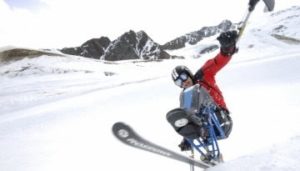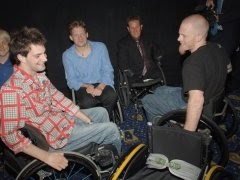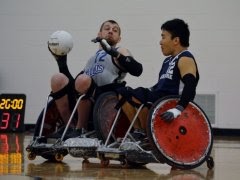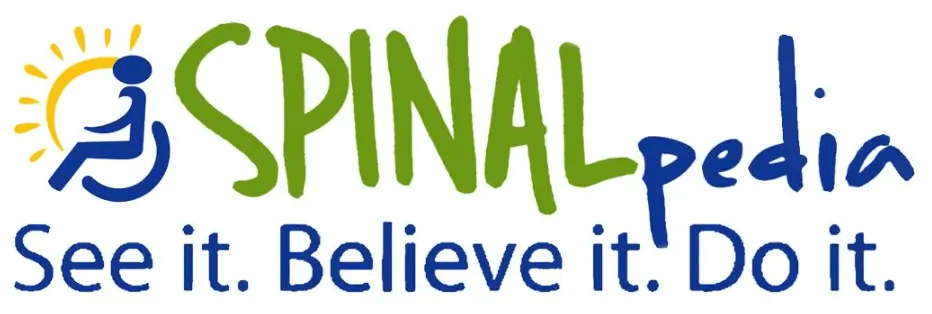Adaptive Sports for Paraplegics

It seems that the moment you become a wheelchair-user—especially a paraplegic—the entire world thinks you’re off to become the next great Paralympian. And that may be true! If you were an athlete before your injury, there’s good news if you’re a paraplegic: there are a lot of adapted sports at your disposal, so you may have a hard time choosing just one.
Almost any sport you can think of has been adapted: football, soccer, hockey, baseball, tennis, skiing, rowing, and even skateboarding. This is an awesome thing to know if you’re newly injured. No, you don’t have to sit at home every day and look out the window—you can actually have fun doing something you enjoy!
Realizing that wheelchair racing and basketball aren’t the only sports out there for people with spinal cord injuries is a pretty great thing. Read on for a rundown of the most popular adapted sports, as well some of the biggest reasons why you should consider taking up a sport, even if you weren’t an athlete before your injury.
Why Play?
Sports are a great way to meet new friends. This is a pretty big deal after sustaining a spinal cord injury. A lot of 
friends fall to the wayside after an injury, so making some new friends can’t hurt. It’s also important to make friends who also have spinal cord injuries so you don’t feel alone in the world. A core human need is having other people in our lives who we can relate to. This helps our happiness and comfort levels in a very important way.
You’ll also meet mentors through playing adapted sports who will teach you many important things. For example, a quadriplegic friend of ours learned how to transfer into his car from a fellow player, which was a huge feat (as he wasn’t able to do this with his physical therapist). You can learn tips and tricks from a new sports friend that you’d never learn in rehab.
We can’t forget to mention the basic health benefits of playing sports. We all know how important it is to move our bodies often, but this becomes quite difficult after a spinal cord injury. Keeping your heart healthy should be one of your number one health priorities, and the cardio you get from playing sports can’t be beat.
Popular Sports:
- Hand cycling: If bicycles are out of the question, hand cycles are a great replacement. In the adapted triathlon world, hand cycling is the bicycling component, and you’ve likely seen one on the road before, too. They are hand-cranked, low contraptions with a big front and back wheel. There are dozens of styles on the market; from lightweight to heavy-duty, there are hand cycles for every terrain.
- Waterskiing: Adapted waterskiing involves a bucketed seat on two regular water skis (advanced skiers will only use one ski, just like slalom skiing). Don’t be fooled, a lot of tricks and speeding can still be done with water ski chairs, commonly called “sit-skis.” Adapted waterskiing is a popular sport all around the country, especially in Florida and Texas.
- Wheelchair racing: Similar to hand cycling, wheelchair racing involves pushing on the wheels and not using a hand-crank. Sometimes, a third wheel is attached to the front of the chair for speed. The most advanced wheelchair racers will have a specific, lightweight chair made just for racing that has the wheels angled inward.
- Swimming: Many paraplegics love swimming because of how lightweight they feel in the water. There are a lot of opportunities for swimming; all you need is a pool and help getting in. It can feel powerful being in the water because of the lightweight nature of it, but if you were a swimmer before your injury, swimming with your injury will definitely take some adjusting. Not being able to use your legs while swimming is difficult, but you can learn to let your arms do all of the work.
- Skiing: One of the coolest adapted sports out there, the adapted snow skiing world is a blast if you love adrenaline. This sport utilizes a sit-ski just like in waterskiing, with the user strapped to a bucketed seat on either one or two snow skis. You still use ski poles, but much shorter versions, instead. Most paraplegics can even use the ski lift by holding onto the lift’s side bars and transferring on.
- Sled Hockey: This adapted version of hockey involves a seat very low to the ground on blades (encased in an iron-like cage for your protection), with the player using a shortened version of a hockey stick. Sled hockey is a pretty fast-paced sport that has been growing in popularity. Sled hockey is also a Paralympic sport.
- Rock climbing: Rock climbing without the use of your legs is definitely a challenge, but many paraplegics love the challenge. There are adapted rock climbing opportunities at rehab centers across the country. Look in your area to see what’s available!
- Basketball: A staple in the adapted sports world, wheelchair basketball is one of the most popular adapted sports among paraplegics. It provides great cardio and a group mentality. If you love working as a team, this is a great sport to get involved in.
- Surfing: Adapted surfing is another great way to get an adrenaline rush. Instead of standing on a surfboard, you lay on your belly and balance as the board catches waves. There is even a device called the Wavejet that will propel the surfboard as if you are kicking from behind. Life Rolls On is one of the biggest adapted surfing organizations in the country. They facilitate free surfing sessions in states across the country, including California, Florida, Hawaii, and North Carolina.
- Tennis: Wheelchair tennis is another popular adapted sport in the Paralympics. We love this sport because it’s easy to play; wherever there’s a court (as long as you can get in, of course), it’s game on. One of the main and only differences of wheelchair tennis is that you are allowed two bounces instead of one; the rest is essentially the same as the original sport.
- Horseback riding: From barrel-racing to dressage, paraplegics all over the world aren’t afraid to embrace their love of horseback riding. In most cases, an adapted saddle will be needed, as well as a platform for getting on the horse and straps to hold your legs onto the horse. Many paraplegics love horseback riding because it feels so much like walking from the canter of the horse beneath them.
- Bowling: A really popular sport, wheelchair bowling has many professional athletes in the country and around the world, with many competing alongside able-bodied competitors. No modifications are necessary for most paraplegics to play.
- Rowing: A new Paralympic sport and a great group activity, rowing is a burgeoning sport for a paraplegic to consider. There are popular rowing clubs in California and in Hawaii. The nice thing about adapted rowing is that it doesn’t require many modifications, and it’s great for your cardio health.
Please watch the following video on adaptive sports for paraplegics and, afterwards, please read the Takeaway Points below.
Video: Wheelchair/Adaptive Sports
Takeaway Points
- Almost every sport has been adapted. If it hasn’t, adapt it yourself!
- Sports are a great social outlet, especially after a spinal cord injury
- Playing sports will keep your cardio health in tip-top shape
- There are dozens of adapted sports available. Think about your personal needs (do you prefer individual sports or group sports?) before choosing
Helpful Resources
- Adaptive Sports – Disabled Sports USA – http://www.disabledsportsusa.org/resources/adaptive-sports/
- Get Sports – PVA – http://www.pva.org/site/c.ajIRK9NJLcJ2E/b.6349705/k.2492/Get_Sports.htm
- Paralympic Sports – Team USA – http://www.teamusa.org/us-paralympics/sports
Adaptive Sports for Quadriplegics

If you’re a newly injured quadriplegic, you might be thinking that your athletic or recreation options aren’t that great. But not so fast! There are a ton of sports out there for quadriplegics. While, yes, you may need assistance playing some sports, that doesn’t matter. At the end of the day, all that matters is that you’re setting aside your injury for a little while and having fun.
Why Play?
The pros of playing sports are huge. You’ll make new friends, which is a big deal after a spinal cord injury. A lot of friends may fall to the wayside after your injury, so making new friends who have no problem with the “new you” is a great thing. It’s also important to make some friends who have spinal cord injuries so you have people in your life with shared experiences.
You’ll also meet wonderful mentors who will teach you valuable lessons and tricks. For example, we know a quadriplegic who learned how to transfer into his car from a fellow athlete after being unable to master this in physical therapy. The tricks you’ll learn from others in your situation are like gold, and participating in sports is a great way to meet these people.
We can’t forget to mention the great health benefits of sports. Any kind of movement helps keep your heart healthy, which is important for everyone, but even more so now that you’re a quadriplegic. Here is a list of the most popular sports played among quadriplegics.
Popular Sports:
1. Quad Rugby: Also known as “Murderball,” quad rugby is by far one of the most popular sports for quadriplegics, and it’s also one of the most fun adapted sports to watch. Modeled after the game of rugby, the game is played on a court, and the action is hard hitting (you will sometimes even see wheelchairs flip). Special gloves can be worn that have a “sticky” feel to them, helping players to catch the ball.
2. Hand cycling: Many quadriplegics can hand cycle, which is great, because hand cycling is an excellent cardio workout. Hand cycles are a relatively big investment, so getting into this sport can be difficult for many quadriplegics. But once they make the investment in a hand cycle, they are always glad they did. Hand cycling is also a great way to partner with an able-bodied person on an adventure, making hand cycling one of the best “couples sports” out there.
3. Swimming: Like paraplegics, many quadriplegics love swimming because of how lightweight they feel in the water. All you need is a pool and a willing able-bodied person for assistance. Floaties or noodles can help if you can’t swim. Try hanging onto an inflated ring, putting it over your head first. Many quads can hang on and float independently with this method. Swimming is still possible with practice for many lower-level quads.
4. Power Soccer: Modeled after soccer, power wheelchairs are required to play this sport (sorry, no manual wheelchairs allowed). Many people will install a metal plate to the front of their chairs to get a good “kick.” Zooming around on the court playing is a lot of fun, and there are clubs worldwide.
5. Skydiving: Skydiving has become a hugely popular sport among quadriplegics in recent years. The reason why: the easy adrenaline rush. You’ll frequently see quadriplegics with higher level injuries go skydiving. It just feels good to get out of your element for that blissful handful of minutes you’re in the sky. You will need to go tandem (strapped to someone else while falling) of course, but this method is used by many able-bodied people as well.
6. Skiing: Water skiing and snow skiing is also enjoyed by quadriplegics. A bucketed seat fused to two skis makes it possible for quadriplegics to do either the summer or winter version of skiing. Shorted ski poles (outriggers) are used for snow skiing and able-bodied assistance is needed for both sports.
7. Surfing: Adapted surfing is another great way to get an adrenaline rush. Instead of standing on a surfboard, you just lay on your belly and enjoy the ride as the board catches waves. There is even a device called the Wave jet that will propel the surfboard as if you were kicking from behind. Life Rolls On, founded by a quad, is one of the biggest adapted surfing organizations in the country. They put on free surfing sessions in California, Florida, Hawaii, and North Carolina.
8. Tennis: Wheelchair tennis can also be played by quadriplegics. Typically, the racquet is taped to the wrist to get a good grip. In wheelchair tennis, you get two bounces to hit the ball instead of just one. The rest of the game is played relatively the same as the original sport.
9. Bowling: A super popular sport among quadriplegics of all levels is wheelchair bowling. This sport is by far one of the most easily adapted sports out there because all that’s needed is a simple “push” motion to get the ball rolling down a special ramp. High-level quads will even use mouth-sticks to push their ball down the ramp.
10. Kayaking: Surging in popularity in recent years, adaptive kayaking has become one of the most popular sports for quadriplegics. This sport is easily adaptable since all that’s needed to paddle is shoulder and bicep control. Active Hands (a holding splint) is used to help hold the paddle securely. To sit with a firm balance, special reinforced seats with a higher back are available for quads interested in kayaking.
Please watch the following video on adaptive sports for quadriplegics and afterwards please read the Takeaway Points below.
Video: Adaptive Sports for People Living with Quadriplegia with Candace Cable
Takeaway Points
- There are a lot of sports available for quadriplegics
- You can make new friends and mentors while playing sports
- Some of the most popular sports for quadriplegics include quad rugby, hand cycling, skydiving, and power soccer
Helpful Resources
- Sports For Quadriplegics – Apparelyzed – http://www.apparelyzed.com/forums/topic/31346-sports-for-quadriplegics/
- United States Quad Rugby Association http://usqra.org/
- United States Power Soccer Association http://www.powersoccerusa.net/page/show/1629548-our-sport
- Adaptive Sports – Disabled Sports USA
http://www.disabledsportsusa.org/resources/adaptive-sports/ - The Active Hands Company http://www.activehands.com/
- Creating Ability (adaptive paddling gear) http://www.creatingability.com/
- Life Rolls On http://www.lro.org









